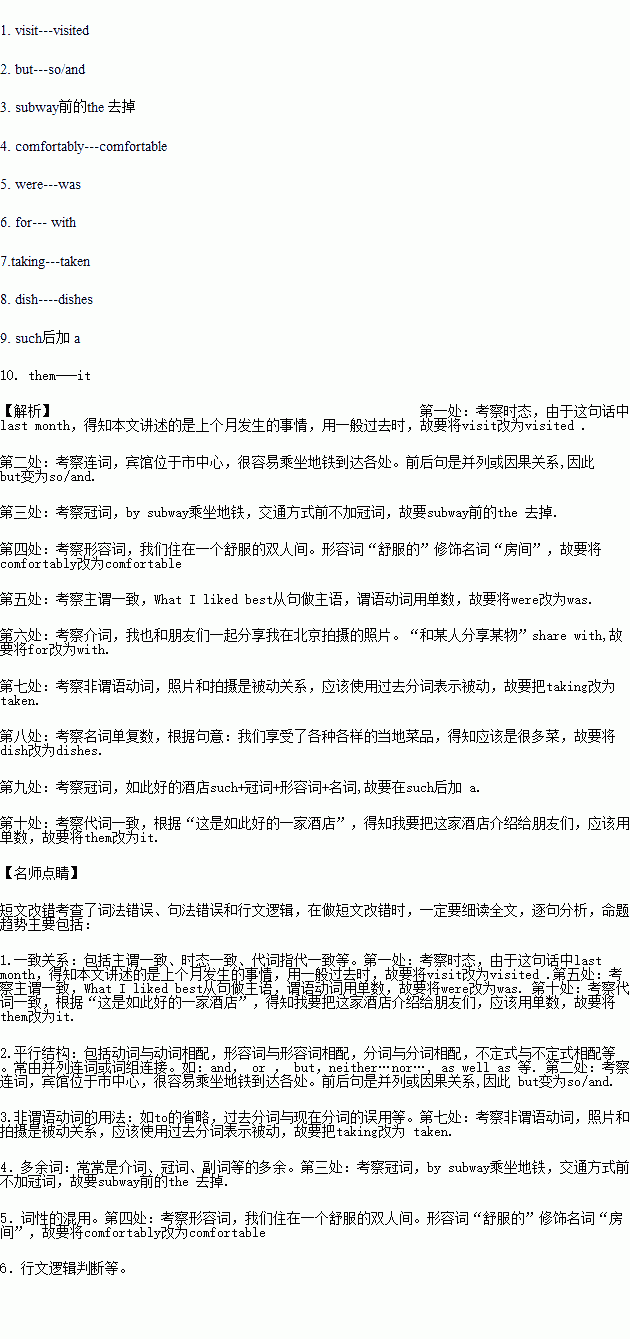题目内容
假定英语课上老师要求同桌之间交换修改作文,请你修改你同桌写的以下作文。文中共有10处语言错误,每句中最多有两处。每处错误仅涉及一个单词的增加、删除或修改。
增加:在缺词处加一个漏字符号(∧),并在其下面写出该加的词。
删除:把多余的词用斜线(\)划掉。
修改:在错的词下面画一横线,并在该词下面写出修改后的词。
注意:1. 每处错误及其修改均仅限一词;
2. 只允许修改10处,多者(从第11处起)不计分。
My father and I stayed at the South Lake Hotel for a week when we visit Beijing last month. It is in the city center , but it is easy to go anywhere from the hotel by the subway. We lived in a comfortably double-room with a big bath. What I liked best were the free high-speed Internet connection in the room. I checked my email messages every day. I also shared for my friends many photos taking in Beijing. The food was wonderful with reasonable prices, and we enjoyed several local dish. It is such great hotel that I would introduce them to any friend of mine who is going to Beijing.
 新课标快乐提优暑假作业陕西旅游出版社系列答案
新课标快乐提优暑假作业陕西旅游出版社系列答案 暑假衔接培优教材浙江工商大学出版社系列答案
暑假衔接培优教材浙江工商大学出版社系列答案 欣语文化快乐暑假沈阳出版社系列答案
欣语文化快乐暑假沈阳出版社系列答案

 see the girls there, as they knew they were not allowed to go to the park alone. Obviously the girls 8.(hear) strange noises and then decided to run as fast as they could to get away. While 9.(run), Susie fell over and could not get up.
see the girls there, as they knew they were not allowed to go to the park alone. Obviously the girls 8.(hear) strange noises and then decided to run as fast as they could to get away. While 9.(run), Susie fell over and could not get up. write is as important as what we write.
write is as important as what we write. d.
d.